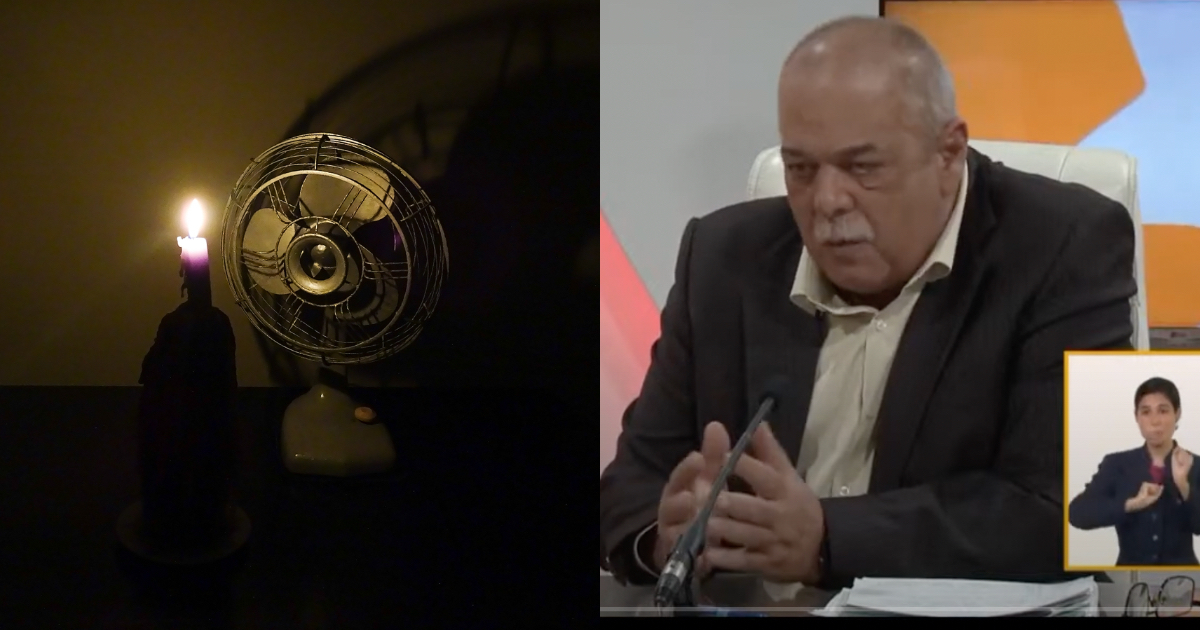The Cuban Minister of Energy and Mines, Vicente de la O Levy, stated this Wednesday that the growth in electricity consumption on the island is primarily due to small and medium-sized enterprises (Mipymes), self-employed individuals, and the influx of air conditioners arriving in large numbers. He remarked that the rise in demand is evolving in a manner "we've never seen before." Additionally, his team has observed that when a blackout exceeds three hours, consumption spikes by 51% upon the return of power.
According to the minister, Cuba had planned maintenance with the financial resources available to limit power outages to four hours from January to June 30. De la O Levy avoided using the term "blackouts" and attributed the need for these outages to the lack of generation reserves, which, in his view, would have allowed maintenance without cutting power. The planned maintenance tasks were accomplished, but the government failed to adhere to the scheduled four-hour interruptions due to "significant issues with fuel supply," stated the minister, who highlighted the "rigorous analysis" his department conducts when planning power cuts to avoid "destabilizing the system." He also blamed the poor condition of the plants on "the enemy," referring to the United States.
The worst periods occurred in March, May, and "some days in June," with blackouts lasting up to 12 hours in some provinces. The issue persists, according to De la O Levy, who emphasized the difficulty in importing crude oil for refining or already refined fuels, without specifying that the issue is due to a lack of funds. Furthermore, the operating plants are not running at full capacity, collectively generating 400 MW below their maximum output. This shortfall is attributed to years of exploitation and a shortage of spare parts, among other limitations.
The minister claimed that maintenance activities ceased on June 30, and in early July, there was a "significant decrease in disruptions," with a 10.6% increase in energy delivery to the system compared to the previous year. However, this increase did not match the rise in demand, compounded by "some issues with fuel" though less severe than in May.
De la O Levy stressed that the maintenance was intended to minimize power outages but clarified that it was never promised that blackouts would be eliminated. "August was extremely tense," he acknowledged, referring to the persistent power interruptions, especially noting that the latter part of the month was more challenging than the beginning. He insisted that the interruptions were not due to poor maintenance but rather other failures, such as a high-pressure hydraulic pump at the Guiteras thermoelectric plant, which needed to be purchased in Europe amid financial difficulties. Additionally, the pump required installation by an expert who requested an oil change for the entire plant and other adjustments that Cuban authorities could not afford, resorting instead to using locally made pumps by engineers in Cienfuegos.
Understanding Cuba's Energy Crisis
To provide further clarity on the challenges faced by Cuba's energy sector, here are some frequently asked questions and their answers.
Why is Cuba experiencing an increase in electricity consumption?
The increase in electricity consumption is attributed to the proliferation of small and medium-sized enterprises (Mipymes), self-employed individuals, and the continuous influx of air conditioners.
What are the main factors behind the power outages in Cuba?
The main factors include a lack of generation reserves, issues with fuel supply, and the poor condition of power plants due to years of exploitation and a shortage of spare parts.
How has the Cuban government addressed the power outages?
The government planned maintenance activities to minimize power outages but has struggled with fuel supply issues and financial constraints, leading to continued disruptions.
What is the current state of Cuba's power plants?
Cuba's power plants are generating 400 MW below their maximum capacity due to years of exploitation, lack of spare parts, and other limitations.
